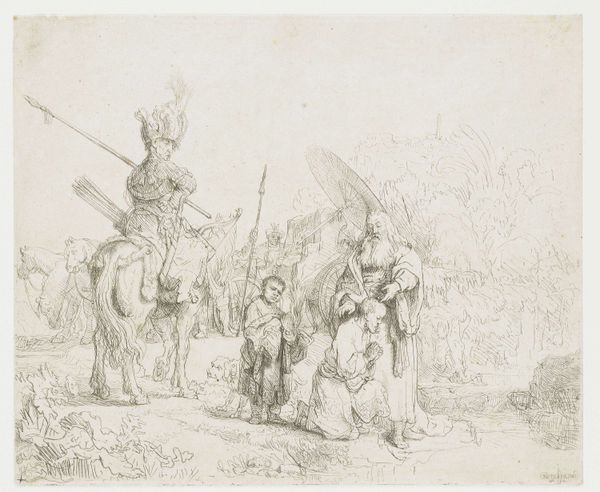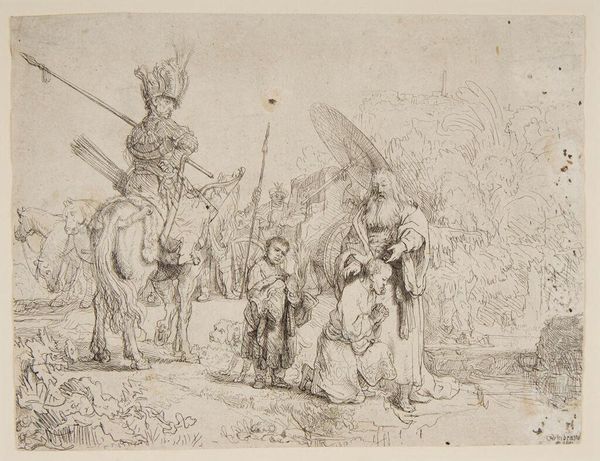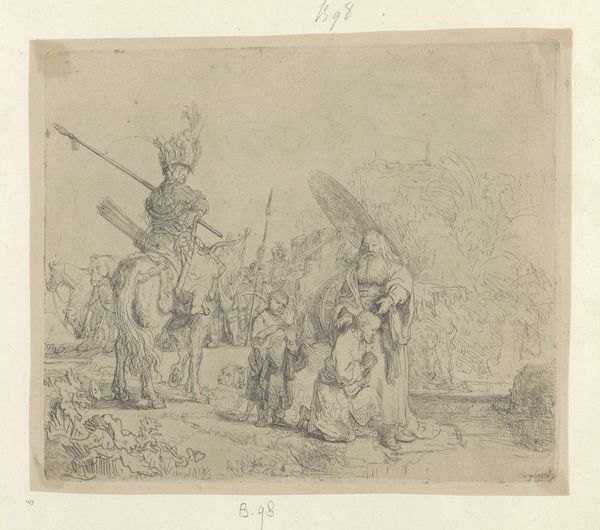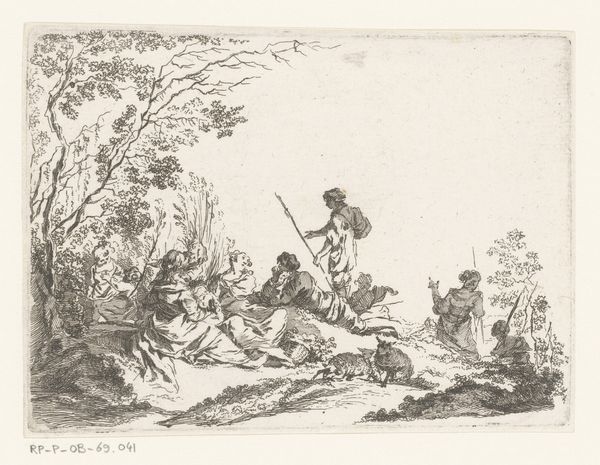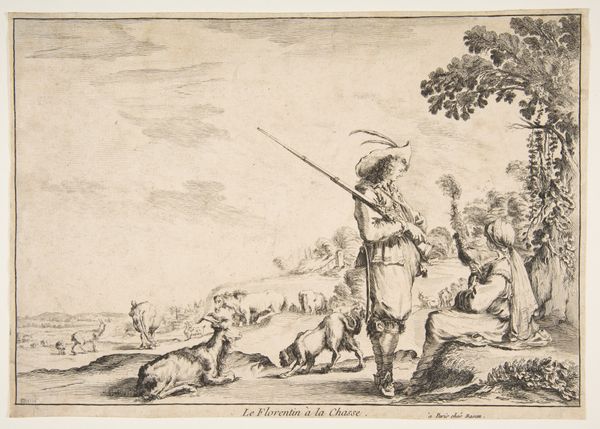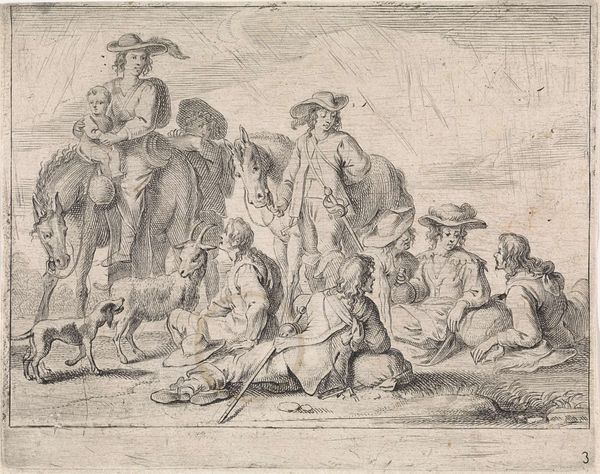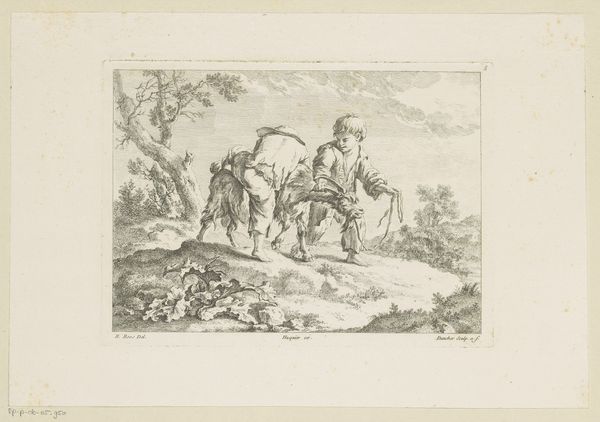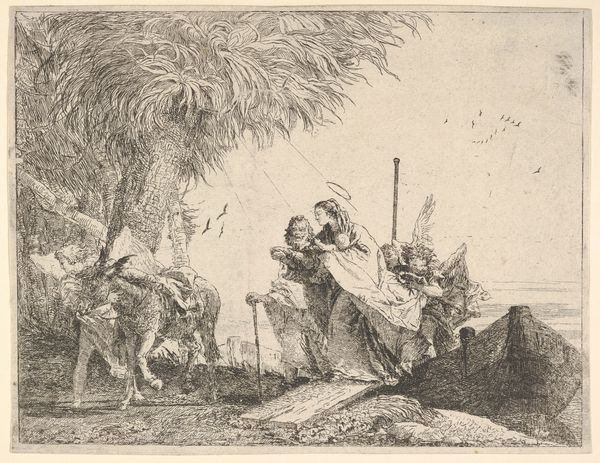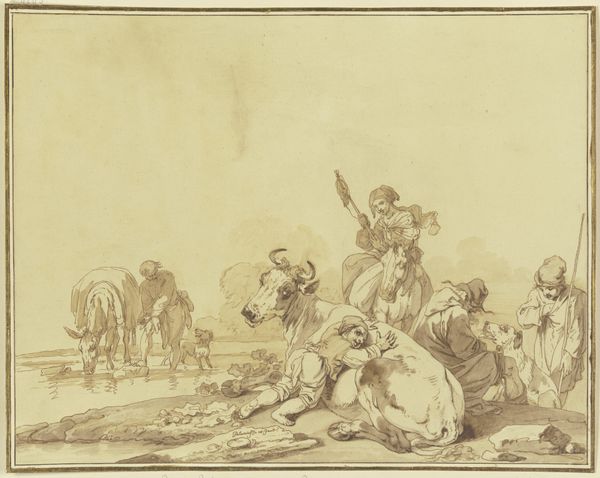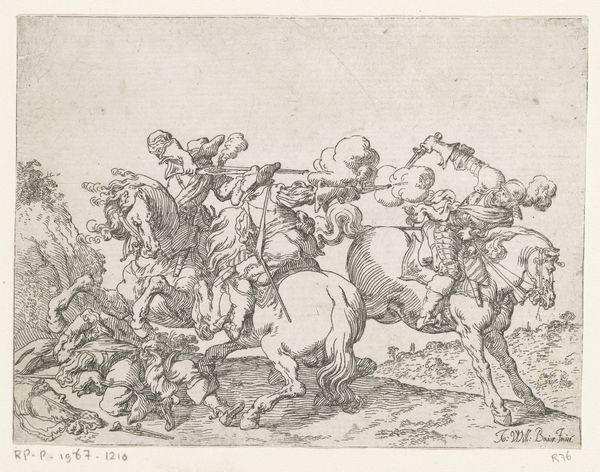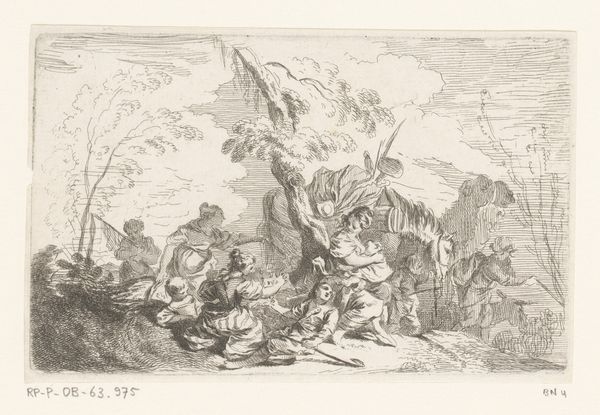
print, etching
#
narrative-art
#
baroque
#
dutch-golden-age
# print
#
etching
#
figuration
#
history-painting
Dimensions: 7 3/16 x 8 3/8 in. (18.3 x 21.3 cm) (plate)
Copyright: Public Domain
Editor: So, this is Rembrandt van Rijn's "The Baptism of the Eunuch," an etching from 1641. There's something really striking about how such a significant event is portrayed with such delicate lines and understated drama. What draws your attention in this piece? Curator: It's precisely that tension between the intimate moment of baptism and the grandeur of the surrounding scene that fascinates me. Consider the historical context: the story from the Book of Acts speaks to the early church's radical inclusion. Rembrandt, working in the Dutch Golden Age, a period marked by both religious fervor and burgeoning colonialism, likely saw parallels. Who gets access to salvation, and on what terms? Editor: I see what you mean. The opulence of the Eunuch’s retinue juxtaposed with the simplicity of the baptism itself creates a visual tension. It is about salvation, but it's also about power, privilege, and access, isn’t it? Curator: Exactly! Think about the power dynamics at play here. The eunuch, a figure often marginalized due to their gender and social position, finds spiritual liberation. And the etching medium itself – reproducible, accessible – democratizes the image and, by extension, the story. How might a contemporary audience read this image through the lens of identity politics and intersectionality? Editor: That’s a really good question! It seems like the piece anticipates current conversations about inclusivity, which feels surprising for something made so long ago. It makes you consider how progress and these power dynamics have or haven't evolved. Curator: Indeed. This image encourages us to confront these dynamics head-on, recognizing their historical roots and ongoing manifestations. It’s about Rembrandt's artistic choices, yes, but also about larger societal narratives and structures of power. Editor: This has changed my perspective a lot! I initially focused on the technical skill, but now I appreciate the complex cultural layers that Rembrandt was engaging with. Curator: And that is what makes the artwork truly live!
Comments
No comments
Be the first to comment and join the conversation on the ultimate creative platform.
